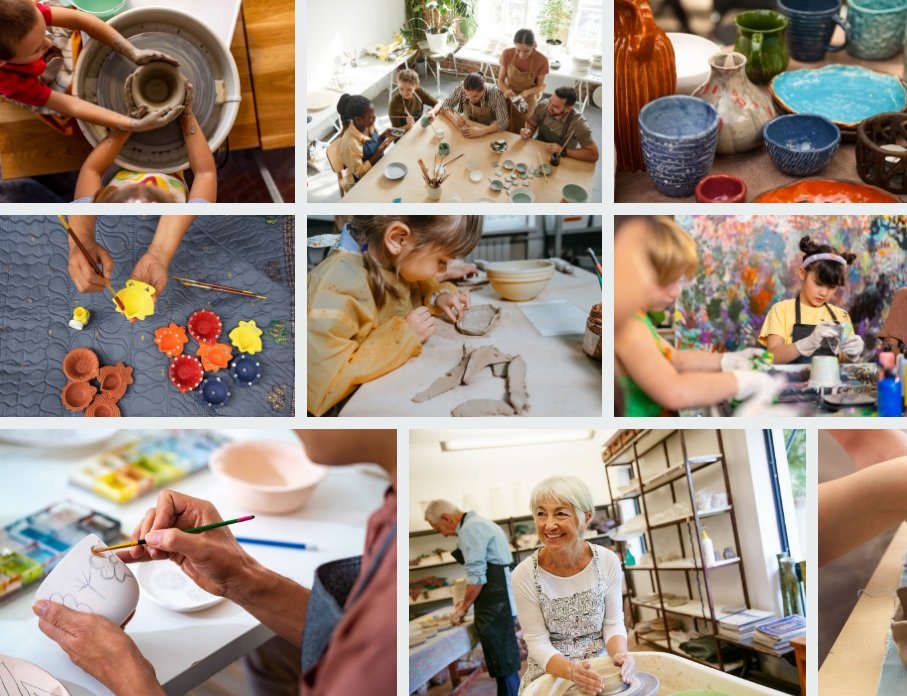Visual art has been a significant part of human culture for centuries, and its importance and significance have only increased with time. Whether it is the stunning paintings of great artists or the mesmerizing sculptures created by master craftsmen, visual art has the power to transport people to another world, to evoke emotions, and to inspire them.
Introduction
Visual art refers to any form of art that is visual in nature, such as painting, drawing, sculpture, photography, and graphic design. It is a form of creative expression that relies heavily on the use of the visual element to communicate with the viewer. The aim of this article is to explore the importance and significance of visual art in today’s world.
The Historical Significance
Visual art has played a vital role in human history, from the prehistoric cave paintings to the Renaissance period’s grand masterpieces. The art of the past reflects the culture, beliefs, and values of the society in which it was created. Visual art has been used to document historical events, to express political and religious beliefs, and to celebrate cultural diversity.
The Cultural Significance
Visual art has become an essential part of cultural heritage and identity. Every society has a unique visual language that reflects its cultural values, beliefs, and traditions. Visual art has been used to promote cultural exchange and dialogue, to preserve cultural heritage, and to challenge cultural stereotypes.
The Social Significance
Visual art has the power to shape and influence society. It can be used to raise awareness of social issues, to inspire change, and to promote social justice. Visual art has been used to address issues such as poverty, discrimination, and environmental degradation.
The Emotional Significance
Visual art has the ability to evoke emotions and to establish a relationship between the creator and the audience. It can inspire awe, wonder, and joy, or it can evoke sadness, anger, and fear. Visual art has been used to explore the human condition and to express emotions that are difficult to articulate.
The Educational Significance
Visual art is an essential part of education, as it teaches students to think creatively, to communicate visually, and to appreciate cultural diversity. Visual art has been used to enhance learning in subjects such as history, literature, and science.
The Therapeutic Significance
Visual art has therapeutic benefits and can be used to promote mental health and well-being. It has been used to treat a wide range of mental health issues, including anxiety, depression, and PTSD.
The Economic Significance
Visual art is a significant industry, generating billions of dollars in revenue each year. It creates jobs for artists, art dealers, museum curators, and other professionals in the art world. Visual art has become a valuable asset for investors, with some pieces selling for millions of dollars.
The Technological Significance
It has also been influenced by technological advancements. The advent of digital technology has revolutionized the way artists create and share their work. Digital art has opened up new opportunities for artists, allowing them to experiment with new mediums and techniques.
Finally, visual art is a multifaceted form of creative expression that has played a significant role in human history, culture, and society. It has the power to evoke emotions, to inspire change, and to promote cultural understanding and diversity. Whether it is a classic painting, a modern sculpture, or a digital artwork, visual art has the ability to captivate and inspire people across generations and cultures. As such, it is an essential part of our world and our future.
*********FAQs*********
What is visual art?
Visual art refers to any form of art that is visual in nature, such as painting, drawing, sculpture, photography, and graphic design.
What is the historical significance of visual art?
Visual art has played a vital role in human history, documenting historical events, expressing political and religious beliefs, and celebrating cultural diversity.
How does visual art promote cultural exchange?
Visual art can be used to promote cultural exchange and dialogue by showcasing the unique visual language of different cultures and providing a platform for cross-cultural understanding and appreciation.
Can visual art be used for social activism?
Yes, visual art can be used for social activism by raising awareness of social issues, inspiring change, and promoting social justice.
How does visual art benefit mental health?
Visual art has therapeutic benefits and can be used to promote mental health and well-being by providing a creative outlet for self-expression and promoting mindfulness and relaxation.
















